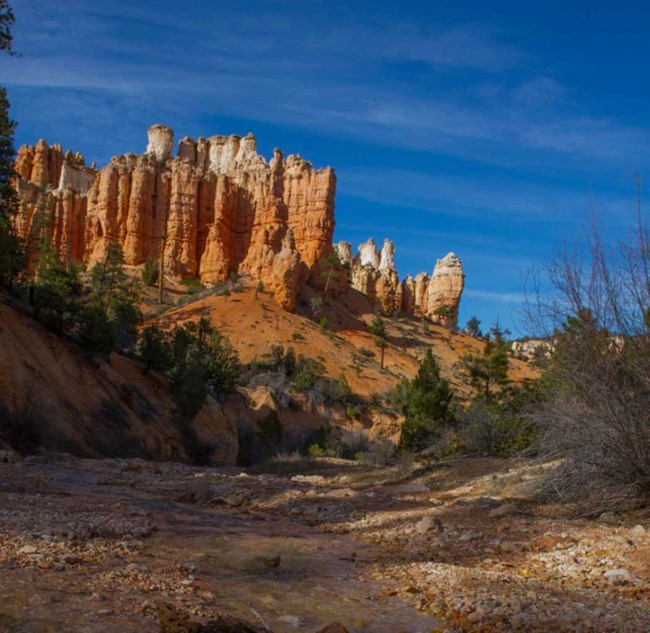Learn about NRCAs
The Natural Resource Condition Assessment (NRCA) Program provides framework, funding, and publishing support to parks to aid in the synthesis and documentation of natural resource conditions. Condition assessment reports are a tool to describe selected park resources, and record a snapshot of their current condition, identify trends, and identify potential or current threats and stressors. Understanding the condition and trend of natural resources is key for parks and NPS planners to appropriately prioritize and allocate stewardship resources.

Photo by NPS NCPN.
Bryce Canyon is not a single canyon, but a series of natural amphitheaters filled with irregularly eroded spires of rocks called hoodoos. Because the national park transcends 2,000 feet of elevation, the park exists in three distinct climatic zones, providing a diversity of habitat for many plants and animals.
Traditional NRCA Report: 2018
In an effort to better understand and manage the natural resources of the park, a Natural Resource Condition Assessment was completed, and published in 2018. Staff from the National Park Service (NPS) and Utah State University worked together to identify the natural resources and stressors to include in this condition assessment. The final report includes eleven resource topics:
- Viewshed |
||
- Night sky |
||
- Air quality |
||
- Soundscape |
||
- Geology |
||
- Water quality |
||
- Upland vegetation |
||
- Unique and distinctive vegetation |
||
- Non-native invasive plants |
||
- Birds |
||
- Utah Prairie dog |
The park’s viewshed, night sky, water quality, birds, and Utah prairie dog (Cynomys parvidens) were considered to be in good condition. Air quality, upland vegetation, and non-native invasive plants were of moderate concern. And while none of the resources were rated as of significant concern exclusively, conditions for the park’s soundscape, geology and unique vegetation were of moderate to significant concern. Like many other national parks, resources at Bryce Canyon NP face many threats, such as increasing temperatures due to climate change, ever-increasing visitation to the park, conflicting management mandates between resources and human health and safety, etc. Fostering effective partnerships will become even more important in maintaining or influencing the park’s natural resource conditions and identifying necessary adaptations in a rapidly changing environment.
For other reports and natural resource datasets visit the NPS Data Store.
Source: NPS DataStore Collection 7765 (results presented are a subset). To search for additional information, visit the NPS DataStore.
Last updated: August 15, 2022
